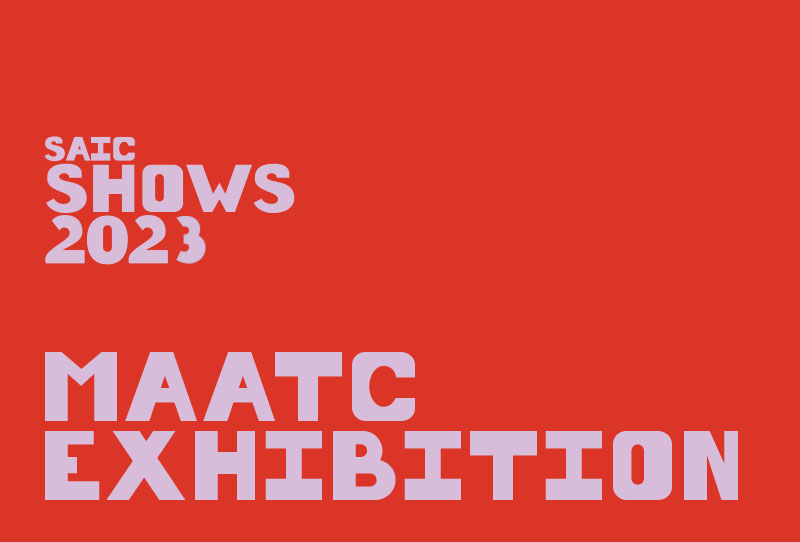Brit’s pronouns are she/her/hers/ella. Brit is a third-year art therapy and counseling student at the School of the Art Institute of Chicago (SAIC). She is currently working as a Creative Art Therapy Intern at Thresholds in the Dincin Program and Mother’s Project, working with young and older adults experiencing severe and co-occurring mental health challenges. Previously, she interned at UCAN Residential as a Clinicial & Art Therapy Intern working with youth-in-care. Brit is fluent in English and Spanish and identifies as a mixed-race, disabled, queer, Latinx woman. Brit works and lives with her partner Jose, her son Manu, and her dog Luna in Chicago.
This project follows the discovery of the relationship I have with myself, my therapeutic relationships, and my processing response in countertransference. As a form of response art, I engaged in free writing, artmaking, somatic movement exercises, academic research, and installation to help me make sense of countertransference. Based on my reading, artmaking, and fieldwork experiences, I find that countertransference can best be described from the therapist’s own point of view and experience: how it impacts me as a therapist, be used as a tool for building confidence in the therapy room, and as a tool for building relationships with myself and clients. My goal in installing my work is for viewers to feel the energy of countertransference in the tapestries in lifesize form. Installing these tapestries as a diptych in space helps me reconcile, externalize, and better learn to communicate the intense discomfort found in the discovery of overlapping relationships and identities I explore in my inner world so I can better show up for myself and my clients when countertransference arises.
My process in creating the culminating artwork is instinctual, cathartic, repetitive, and experimental. My work is an intimate, proverbial, topographical, and sensorial story that moves with emotion, questions, and understanding along several planes of thought and motion. I find form and meaning of the therapeutic process through purposeful shape, color, and material choice. I draw from a variety of artistic mediums including sculpture, performance, installation, and textile arts in this artwork. Each material and method was deliberately chosen to speak to the delicate, strong, energetic, and inescapable embodiment of countertransference. The materials and modalities run the spectrum of comforting and dangerous and speak to the vast number of definitions and use they hold. This work quickly turned into a diptych; the tapestries speak to each other in lifesize dimensions as I experienced intense countertransference at my fieldwork sites. They defy gravity as they hang from the ceiling capturing the shadows and weight of the work endured between relationships in and out of the therapy room. I hope that interacting with this diptych helps start conversations about how our narratives shape who we are in relationships with others and inspire others to express the unspeakable, making sense of their own countertransference in the therapy room and in daily living.
There is a particular vulnerability I have in showing this work: my fiber work specifically holds my innermost sacred stories as they symbolize a sacred connection to women I admire who taught me everything they know about fiber art. Sharing my vulnerability in public urges the investigation of my various identities as an art therapist. The tapestries symbolize utilitarian, wearable, woven, hanging sculptures as a call and homage to my indigenous background, my gender identity, my inner child, my shadow self, and my mothering identity. The sculptures as recordkeeping quipu and comforting aguayo from my Andean heritage bring me comfort, consolation, and connection with my ancestors and myself: they provide grounds to rebuild, rewrite, and externalize my internalized narratives and trauma. The tapestries as conduits of communication between each other and viewers transform into narrative textiles I can release into and move on from.
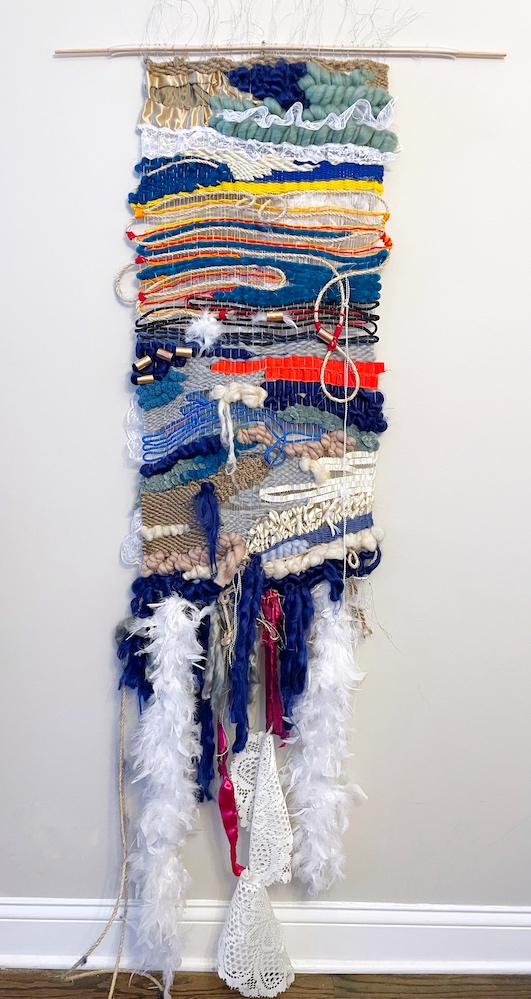 Conversations in the Meeting Place “Wire-warped tapestry”; front view; dimensions: 90” L x 21”W x 3.5”D; Materials: Wool roving, ribbon, lace, beaded ribbon, feather, rope, silk fabric, embroidery thread, plastic tubing, yarn, fishing rope, brass, picture hanging wire, nylon rope, and fishing line
Conversations in the Meeting Place “Wire-warped tapestry”; front view; dimensions: 90” L x 21”W x 3.5”D; Materials: Wool roving, ribbon, lace, beaded ribbon, feather, rope, silk fabric, embroidery thread, plastic tubing, yarn, fishing rope, brass, picture hanging wire, nylon rope, and fishing line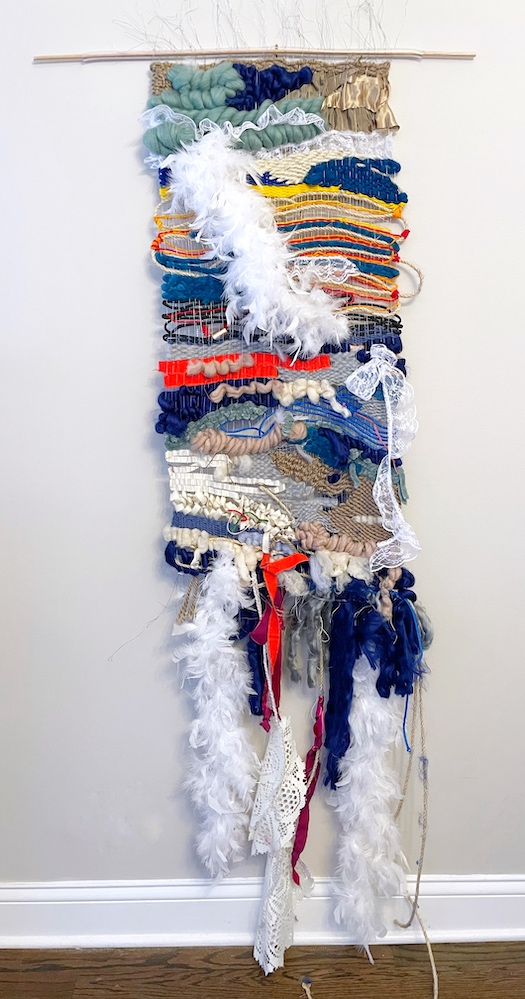 Conversations in the Meeting Place “Wire-warped tapestry”; back view; dimensions: 90” L x 21”W x 3.5”D; Materials: Wool roving, ribbon, lace, beaded ribbon, feather, rope, silk fabric, embroidery thread, plastic tubing, yarn, fishing rope, brass, picture hanging wire, nylon rope, and fishing line
Conversations in the Meeting Place “Wire-warped tapestry”; back view; dimensions: 90” L x 21”W x 3.5”D; Materials: Wool roving, ribbon, lace, beaded ribbon, feather, rope, silk fabric, embroidery thread, plastic tubing, yarn, fishing rope, brass, picture hanging wire, nylon rope, and fishing line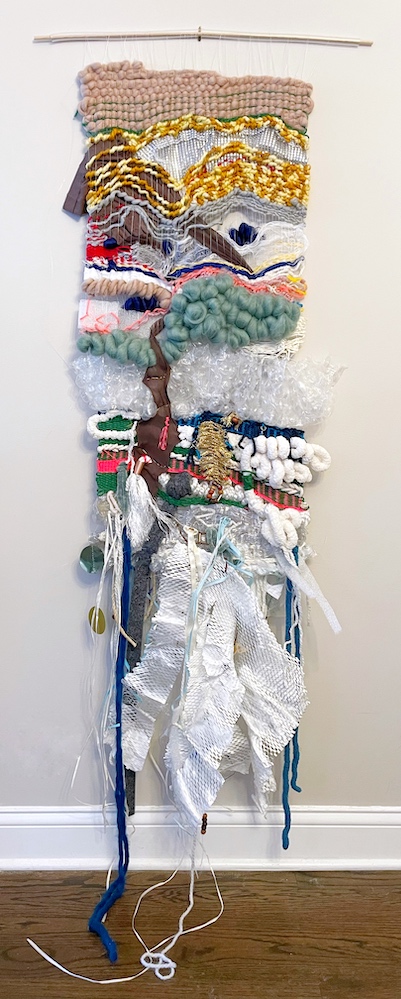 Conversations in the Meeting Place “Fishing line-warped tapestry”; front view; dimensions: 96”L x 25”W x 4”D; Materials: Wool roving, ribbon, embroidery thread, rhinestone fabric, cotton swab lining, plastic tubing, yarn, wire, plastic, paper, twine, bubble wrap, nylon rope, nylon stocking, fishing line, wooden beads, and brass beads
Conversations in the Meeting Place “Fishing line-warped tapestry”; front view; dimensions: 96”L x 25”W x 4”D; Materials: Wool roving, ribbon, embroidery thread, rhinestone fabric, cotton swab lining, plastic tubing, yarn, wire, plastic, paper, twine, bubble wrap, nylon rope, nylon stocking, fishing line, wooden beads, and brass beads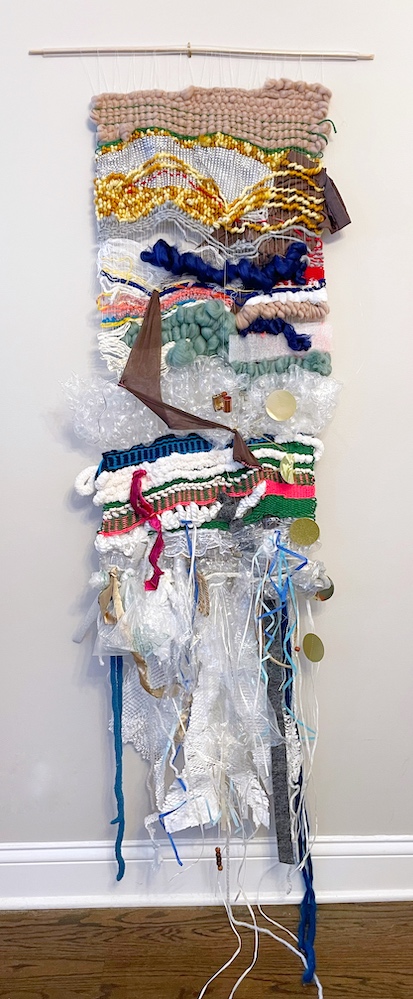 Conversations in the Meeting Place “Fishing line-warped tapestry”; back view; dimensions: 96”L x 25”W x 4”D; Materials: Wool roving, ribbon, embroidery thread, rhinestone fabric, cotton swab lining, plastic tubing, yarn, wire, plastic, paper, twine, bubble wrap, nylon rope, nylon stocking, fishing line, wooden beads, and brass beads
Conversations in the Meeting Place “Fishing line-warped tapestry”; back view; dimensions: 96”L x 25”W x 4”D; Materials: Wool roving, ribbon, embroidery thread, rhinestone fabric, cotton swab lining, plastic tubing, yarn, wire, plastic, paper, twine, bubble wrap, nylon rope, nylon stocking, fishing line, wooden beads, and brass beads